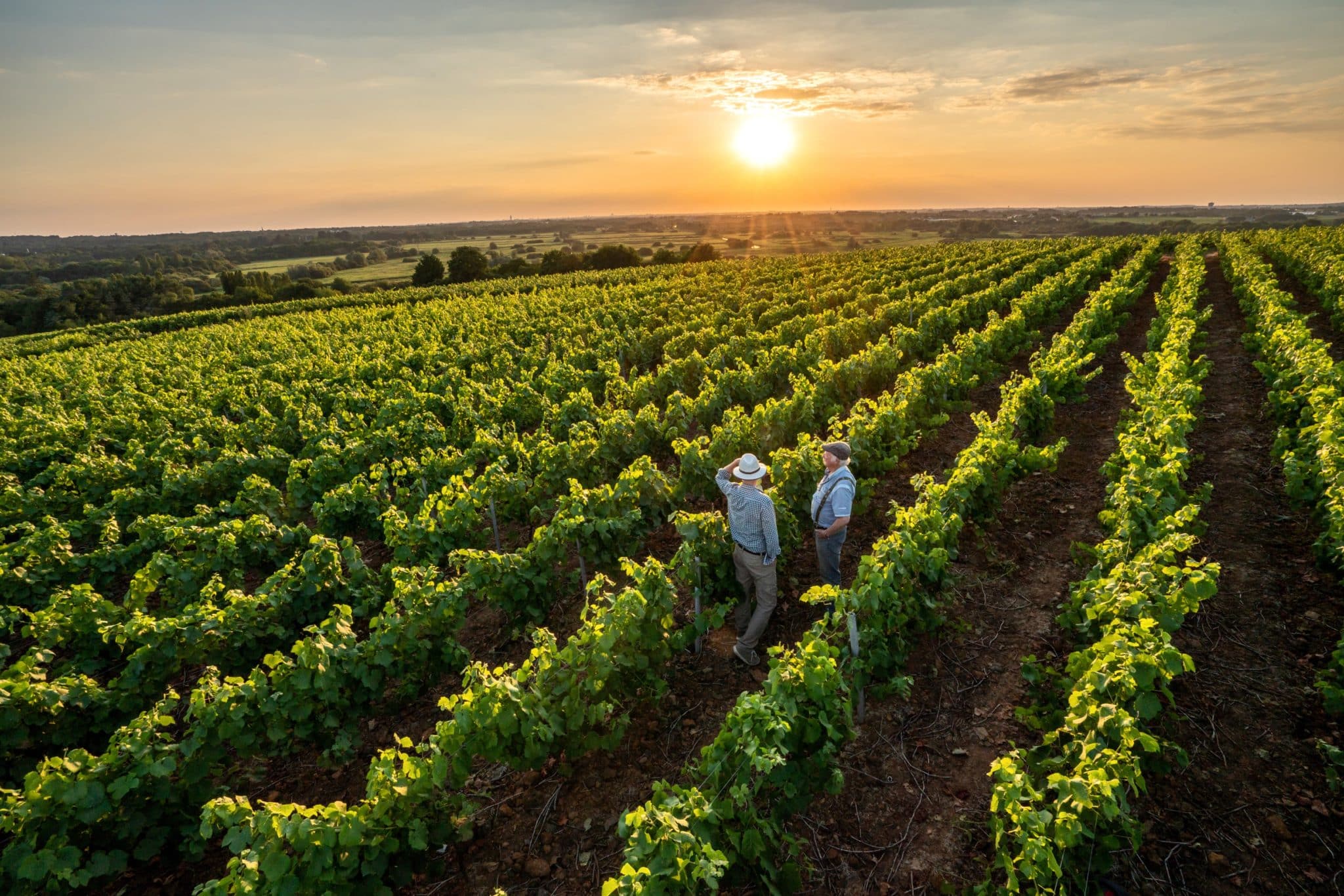This month SO’s resident Wine Editor James Viner raises a glass to the newly revitalised Muscadet: a crisp, dry, modestly-priced, medium-bodied white wine produced eastward and southward of Nantes in the Atlantic-influenced far western Loire Valley…
Muscadet nowadays shows great potential with geologically specific sub-zones helping to improve its reputation and an emerging generation of ardent vignerons devoted to one grape and excited about the fantastic soil diversity.
Based on a recent press trip, I believe that some of Muscadet’s remarkably affordable top wines can now become great substitutes for Burgundy’s Chablis. They’re also a wonderful match for our seasonal native oysters and other bivalves.
Look out for Muscadet’s ten crus communaux and for bottle labels that read ‘sur lie,’ indicating that the wine was left resting unracked on its fine lees (dead yeast cells) for many months to gain extra flavour/rounder mouthfeel (helping to balance the high-acid vim of the Melon). Santé!
1. 2021 Château de la Petite Giraudière, Muscadet Sèvre-et-Maine Sur Lie (£8.35, The Co-op, 12%)
Decent trendy, Picpoul de Pinet – the so-called ‘Muscadet of the South’ (though fruitier) – is hard to find under a tenner. This zesty, bargainous, lees-aged Muscadet from one of France’s oldest (1936) appellations is perfection poured cold with bivalves. Think citrus, apples and a soupçon of saltiness.
2. 2019 Domaine Bruno Cormerais, Muscadet Sèvre-et-Maine Vieilles Vignes Sur Lie (£13.95 mix case, Lea & Sandeman, 12%)
Muscadet is no longer just an engine for inexpensive, simple wine. Here interesting terroir, longer ageing on the fine lees (15 months) and older vines (around 40 years on average) helped to craft a characterful, racy, Chablis-like expression with subtle notes of fennel, tarragon, wet stone and citrus. Moules marinières ahoi!
‘Nowadays quality is no longer an afterthought. Muscadet’s ‘crus communaux’ are helping to wholly refashion Muscadet – place matters in Muscadet’
3. 2016 Muscadet Sèvre-et-Maine La Haye-Fouassière, Le Clos du Château l’Oiselinière, Chéreau-Carré (£14.50, The Wine Society, 12%)
Muscadet’s most important development has been the sanction of ten crus communaux (CCs) subzones (2011). Based on specific soil types these are its most age-worthy, complex and rounded wines produced from low-yielding vines and the fruit of extended mellowing on lees (a minimum of 18-24 months). Production is tiny.
Cru communal La Haye-Fouassière’s subsoils are made up of metamorphic, mainly orthogneiss, rock. This superb 2016 from Chéreau-Carré was produced from low-yielding 80-year-old vines and spent a full four years on its fine lees.
I recently caught up with third-generation winemaker Louise Chéreau who sells it to The Wine Society (her family has supplied the Society’s Muscadet Sèvre-et-Maine sur lie since 1985). I asked her: “Do you think your aged 2016 La Haye-Fouassière will cellar further?” Louise replied, “We only make ‘Le Clos’ in a very good vintage. All ten CCs are made to be kept. We have some 2009-2004 in stock that tastes beautiful!”
“Muscadet has many faces depending on subsoils, ageing on lees and if the wine is kept in the bottle. It shows all its potential after some years in the cellar.”
This superior silken 2016 is in great form with a lick of stony minerality and subtle flinty/menthol complexity. An electrical current of tangy, saline acidity throbs through it, yellow apples and zesty citrus echoing across the penetrative finish. A steal. Don’t serve too cool, around 12°C (54°F) is perfect. Louise runs 1.5-hour vineyard/tasting tours throughout the year for €10 per person. E: louise@chereau-carre.fr
4. 2018 Muscadet Sèvre-et-Maine Château-Thébaud, Jérémie Huchet & Jérémie Mourat (£21, Tanners, 12%)
Château-Thébaud is the smallest cru communal, with gneiss and granodiorite subsoils, requiring a minimum lees ageing of 24 months. This compelling luxe example is textural, chewy and quince-flavoured with hints of liquorice, dried fruits, honey and seashell. Lees-aged complexity (60 months) lives here. Lively mineral finish. Patience will be rewarded; outstanding value.








